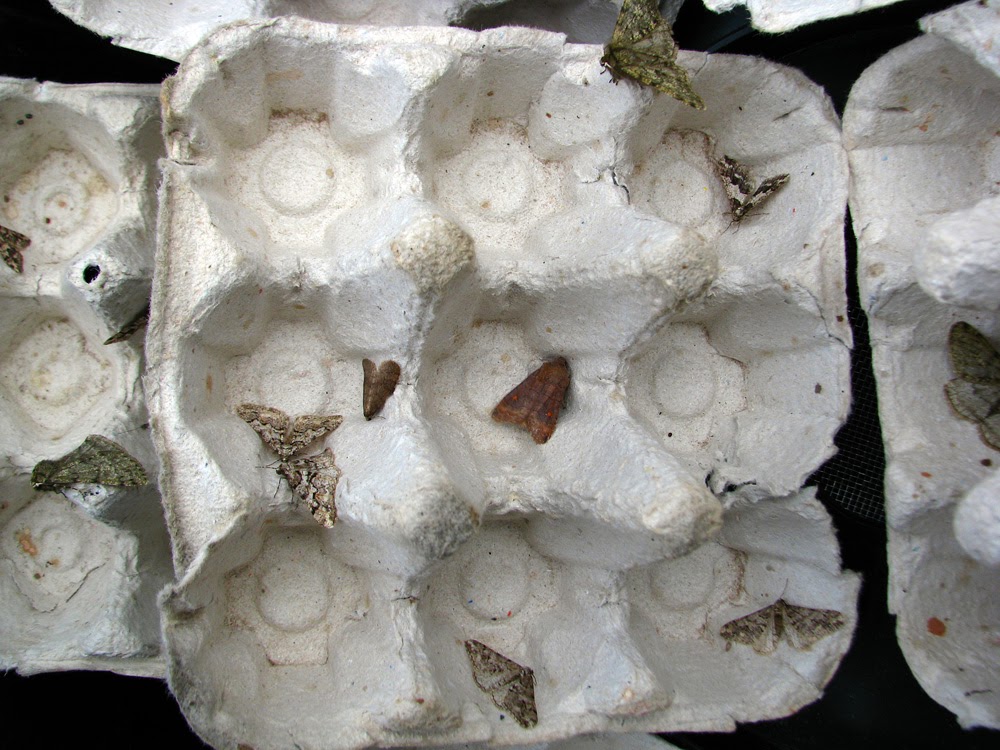This is actually a moth from the last day of 2013, although I didn't realise I had it until a few days later.
One of my winter entomological past-times is to collect handfuls of leaf-litter and take them home to sort though. This usually produces a good mix of beetles, snails, leaf-hoppers and spiders, but on this occasion a moth crawled out of the leaves - the Chestnut.
The Chestnut is known to over-winter as an adult, and will fly on mild nights, but where does it hide itself away the rest of the time? None of my books say much about this, but for this one specimen at least it buries itself in the leaf-litter.
The patch where I collected the leaf-litter (Ragpit Hill, near Great Kimble) was underneath a fallen Beech tree (click on the moth to see photos of the habitat as well), and although it was raining at the time the tree trunk had kept the litter relatively dry. Whether the moth had chosen it as a dry place to be, or whether that's just coincidence, I don't know.
Martin Harvey
 |
| Chestnut Conistra vaccinii |


















